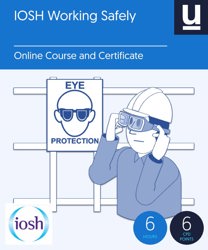What are the different types of employment status?
Employment law sets out three categories that anyone who works for a business will fall under: employee, self-employed and worker.
Employee
![Employees]()
Employees are defined as those that work 'under a contract of employment'. Generally speaking, this means that they regularly work a set or minimum number of hours each week, and cannot send someone else to work in their place.
It is important to note that a contract of employment does not need to be formally written - it can be implied or delivered orally.
Employees have a large number of rights, including the right to statutory sick leave, maternity/paternity leave, minimum notice periods, guaranteed hours and parental leave.
Self-employed
![Self-employed]()
The self-employed are defined as those who run their business for themselves, and work for 'gain or reward otherwise than under a contract of employment'. Most of the time, people who are self-employed are those who put in bids or quotes for their work, submit invoices for the work they have done, and are responsible for paying their own tax and National Insurance.
Worker
![Workers]()
Workers are very difficult to define because they are typically given this status based on what they do not do, rather than what they actually do. Usually, those that work for an employer, but do not have a contract of employment with set hours or regular pay, are considered to be workers.
Workers have some employment rights, but not as many as employees. For example, they are entitled to the National Minimum Wage and paid holiday, but are not generally entitled to minimum notice periods or protection from unfair dismissal.
It is important to understand that the definitions of the three employment statuses provided above are general, and that different definitions may apply in different circumstances. There have also been several legal challenges concerning the status of workers in the gig economy, including Uber and Deliveroo drivers, which have further complicated these definitions.
For this reason, it is essential that any business looking to make decisions about a person's employment status consult with an employment law professional before doing so.
How does a person's employment status affect their rights under health and safety law?
The main piece of health and safety legislation, which is the Health and Safety at Work etc. Act 1974, places several duties on employers to protect the health and safety of its employees while at work. However, these responsibilities vary depending on a person's employment status.
Employee
Health and safety law requires employers to protect their employees from harm while at work, and provide them with the information, instruction, training, and supervision required to do so. They must also:
- Have a health and safety policy in place.
- Communicate their health and safety arrangements to staff.
- Assess the risks present in a workplace using a risk assessment, and put preventative and protective measures in place to control these risks.
- Record the significant findings from the risk assessment.
- Provide health and safety training, and health surveillance where required.
- Regularly review their health and safety arrangements.
Self-employed
Generally speaking, a self-employed person is required by the Health and Safety at Work Act to ensure their own health and safety and that of those affected by their work.
However, there are some pieces of legislation that may place a responsibility for protecting the health and safety of self-employed workers onto businesses. For this reason, it is important that all employers are fully aware of the health and safety legislation that applies to them and their operations. Click here to view more information on health and safety legislation on the Health and Safety Executive (HSE) website.
Worker
Workers are not specifically recognised by the Health and Safety at Work Act. However, the act requires employers to protect the health and safety of anyone who could be affected by its actions, which means that workers should be afforded the same protections that regular employees get.
The only exception to this is agency workers, for whom the responsibility for their health and safety is shared between the agency and the business that uses them. Any arrangements for the health and safety of these workers must be agreed upon by both the agency and the business before any work starts.
Which health and safety legislation explicitly recognises workers?
There are some pieces of health and safety legislation that explicitly provide workers with greater rights. One example of this is the Personal Protective Equipment at Work Regulations 1992 which, on the 6th April 2022, were amended to give workers the same right to personal protective equipment as employees have.
At Commodious, we offer several health and safety training courses that are designed to help your staff work and manage safely. To find out more about some of these courses, use the links below:






